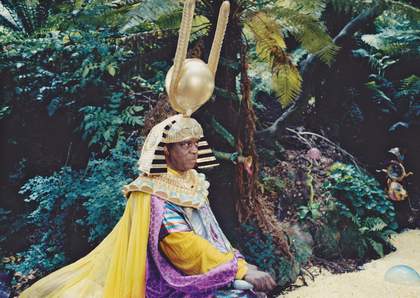Tate Etc. How did you go about making the selection of works for the Tate Liverpool exhibition?
Glenn Ligon It was made in collaboration with Tate Liverpool Artistic Director Francesco Manacorda and Alex Farquharson, the Director of Nottingham Contemporary, who originated the project. There are a core of artists crucial to my practice who I immediately knew I wanted in the exhibition: David Hammons, Felix Gonzalez-Torres, Adrian Piper, Willem de Kooning, Cady Noland, Jean-Michel Basquiat and a few others. They formed the centre around which the rest of the show coalesced. The list also included artists such as Giovanni Anselmo and Robert Morris, who I wouldn’t have considered in relationship to my work until Alex suggested them. The idea is to juxtapose my work with artworks that lead to my practice or might suggest a direction in the future. For instance, looking at Robert Morris’s felt piece Untitled from 1967-8 helps me to think about sculptural objects that are attached to the wall but have a strong three-dimensional presence. I have always thought of my neon work as moving towards sculpture, but the Morris gives me ideas on how to push that investigation further.
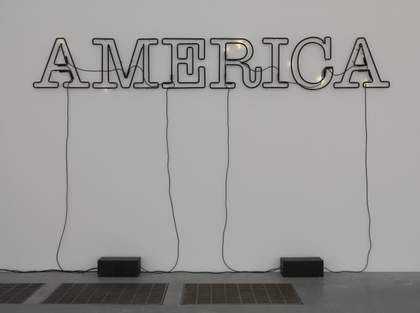
Glenn Ligon Untitled 2006
© Courtesy of the artist
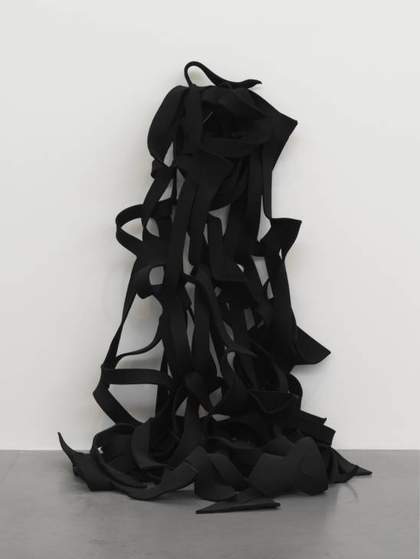
Robert Morris
Untitled 1967–8, remade 2008
© ARS, NY and DACS, London 2002
Tate Etc. There is a refreshingly eclectic mix of artists from various decades, including de Kooning, Melvin Edwards, Gonzalez-Torres, Hammons, William Pope.L, Sun Ra and Beauford Delaney…
GL De Kooning is in the show because at the beginning of my career I was fascinated with abstract expressionism and would make pilgrimages to see his work at the Metropolitan Museum of Art and the Museum of Modern Art in New York. He taught me how to paint, but I soon realised I didn’t want to make paintings that looked like his. That is the moment when I moved towards text-based work. Hammons is included because his interest in the discarded, the abject, the broken-down was diametrically opposed to what I thought my work was about, yet he was the one who taught me there is much to be learned from what a society has left behind. His work caused me to broaden the range of source material I was using for my paintings. For instance, one could argue that the comedian Richard Pryor was as astute about American politics and social life as the novelist Toni Morrison, although they were working in very different arenas, but before thinking deeply about Hammons’s art I would have never made Richard Pryor joke paintings. Delaney is in the show because he makes no separation between figuration and abstraction, and I want to think more about how text (which is a kind of figuration) can move towards abstraction. Also, he was a great friend of writers such as Henry Miller and James Baldwin, and literature has been an important touchstone for me too.
Tate Etc. In what way has your own biography fed into the selection?
GL When curating an exhibition of this nature biography always plays an important part. What I am tracing is a timeline of sorts: where I was, where I am now, where I might be going. The de Koonings and Pollocks that were early influences on me no longer have the same hold on my imagination, but it is important to show how they served a crucial role in my development. I also want to think more about music’s relationship to my work, so that is why artists such as Jennie C Jones and Sun Ra are in the mix. Although coming from very different places, both show us how sound and the visual converge.
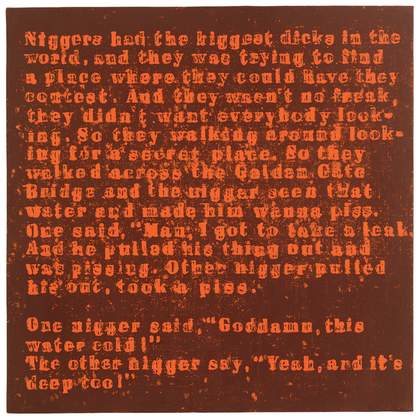
Glenn Ligon
Mudbone (Liar) 3 1993
Oil stick, synthetic polymer and graphite on canvas
813 x 813mm
© Glenn Ligon, courtesy Thomas Dane Gallery, London
Tate Etc. You have written about this project: ‘I realised that juxtaposing my own work with that of others could be an extraordinary way to show a viewer how those encounters and clashes fuel the creative process.’ Could you say a little about the relevance of some of your works – particularly the text-based ones – within this context?
GL One of the reasons de Kooning, Pollock and Kline are in this show is that when I started making text work I was still thinking about ‘allover painting’, that is painting that treated every area of composition as important. While on first glance it would seem that the content of my work takes me far away from the concerns of those artists, the formal structure of my paintings is indebted to them. Similarly, some of the earliest drawings I did have very expressionist grounds into which text was scrawled. The juxtaposition of the work with paintings and prints by Cy Twombly makes that influence explicit.
Tate Etc. What do you think could be the impact of a show such as this on Tate Liverpool’s way of telling the history/story of art in its displays?
GL One of the problems of museum display is objects are adjacent but never touch. I mean they literally never touch, although they do metaphorically. When a curator is making a show they ensure that each object has enough space around it so it can be contemplated without too many distractions. The work must function within the narrative of the exhibition as a whole, but also retain its autonomy. This show will be the opposite of that approach. There are so many works in it and such limited space that they will, by necessity, be too close to one another for some people’s taste. The works will blur in some people’s minds, which reflects how they exist in my mind, where a Hammons body print is blurred with a Twombly painting, which is mixed up with a Bruce Davidson image of subway graffiti, which reminds me of a Basquiat drawing. The space where all these works exist in my head is quite a cramped one, and the beauty of that is that new and unexpected ideas arise from the juxtapositions which that cramped space creates. If I had my way, all the works in the show would be installed touching one other.
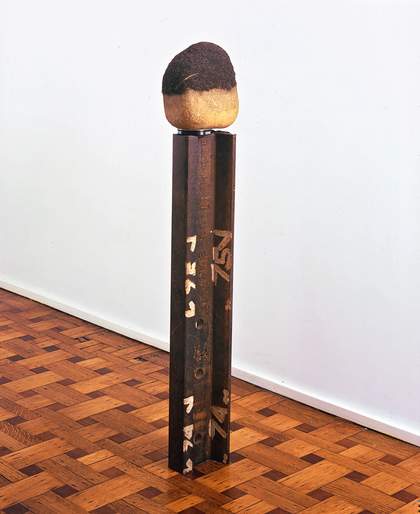
David Hammons
John Henry 1990
Steel rail track, stone, human hair and metal stand
1137 x 146 x 152mm
© David Hammons, courtesy D. Daskalopoulos Collection
Tate Etc. In the book of your collected writings, Yourself in the World, you paraphrase a Franz Kafka quote: ‘Art is a mirror which goes “fast” like a watch – sometimes.’ In other words, it not only reflects society, but predicts where society is going. What would be your view in light of where the visual culture of the West is to date?
GL Let me quote a slogan on a T-shirt by the artist Rirkrit Tiravanija to answer that question: ‘THE DAYS OF THIS SOCIETY IS NUMBERED ’. That is, I don’t know if it still makes sense to make clear distinctions between the West and the rest. Artists don’t work in isolation anymore. They are aware of what is happening in a global sense and define their culture as a global one, so there is a loosening of national or racial identity. A curator I know once did a lecture for other arts professionals about a group of artists working in Africa. He referred to them as ‘Beento’ artists. When asked what region they were from, he replied: ‘No, not “Beento”, “Been to”, as in “been to London”, or “been to New York”.’ His point was that we think globally about economics and politics and we need to start thinking globally about artists and culture too.

